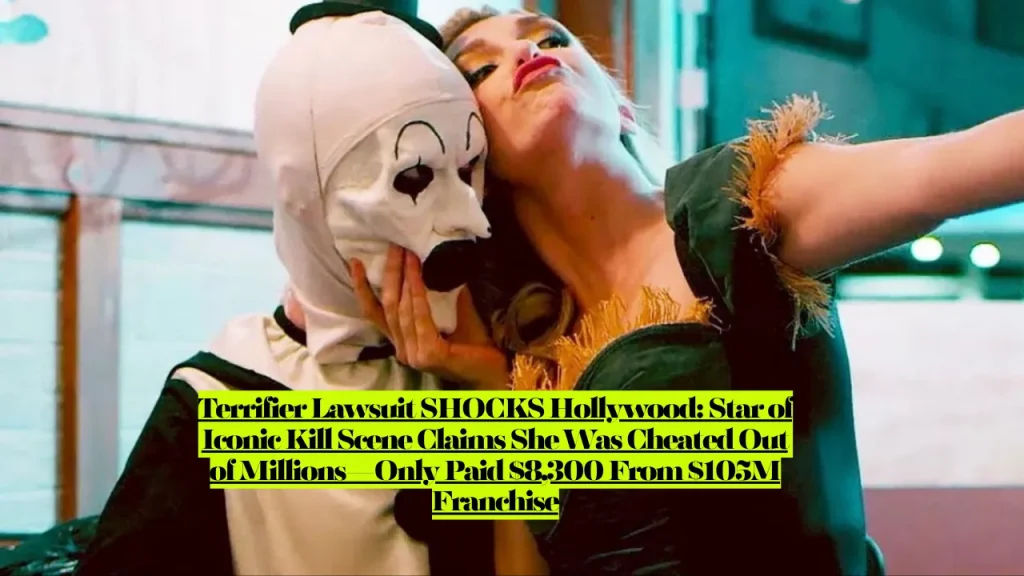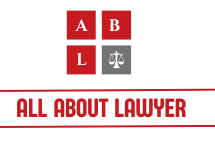Terrifier Lawsuit, Star of Iconic Kill Scene Claims She Was Cheated Out of Millions, Only Paid $8,300 From $105M Franchise
The Terrifier lawsuit filed October 27, 2025 by actress Catherine Corcoran alleges director Damien Leone and producer Phil Falcone breached her 1% profit-sharing contract, paying her only $8,300 despite the franchise grossing over $105 million worldwide. The California federal court complaint also accuses producers of filming her nude death scene without required written consent, sexual harassment, and selling merchandise featuring her nude image without authorization. Corcoran hung upside down for 10 hours in below-freezing temperatures for the franchise’s most iconic kill scene, yet claims producers told her they “don’t keep records” when she demanded payment.
The lawsuit drops just as Terrifier 3 becomes the highest-grossing unrated film of all time with $90.3 million at the box office. Leone’s attorney denies all claims and vows to “vigorously defend this lawsuit,” setting up a legal battle that could expose predatory practices in low-budget horror filmmaking.
What Is the Terrifier Lawsuit?
The Terrifier lawsuit is a breach of contract and sexual harassment case filed by actress Catherine Corcoran against director Damien Leone, producer Phil Falcone, and production companies Dark Age Cinema and Fuzz on the Lens Productions. Corcoran—who played Dawn in the 2016 original—claims she agreed to work for SAG’s minimum daily rate of $100 in exchange for 1% of all franchise profits, including box office, streaming, merchandise, and licensing revenue.
The complaint alleges Corcoran has received only $8,300 total despite her 2015 contract entitling her to 1% of profits across the entire Terrifier franchise. With Terrifier 2 grossing $16 million and Terrifier 3 earning $90.3 million, her 1% share should theoretically exceed $1 million before accounting for streaming, merchandise, and other revenue streams.
The lawsuit presents what Corcoran’s attorney describes as “an all-too-common story of low budget film producers taking advantage of a young actress through fraud, sexual harassment and, ultimately, betrayal.”
The Iconic Kill Scene That Changed Everything
Corcoran’s character Dawn appears in what horror fans consider the Terrifier franchise’s most unforgettable kill sequence. Art the Clown suspends her naked body upside down by her ankles and slowly saws her in half vertically—a scene that became the franchise’s calling card and launched its cult following.
Corcoran filmed the scene in 40-second increments over 10 hours while suspended upside down. A doctor later determined she suffered cranial swelling and eardrum damage from the prolonged inverted position. This sacrifice helped create the franchise’s breakout moment, yet she claims she received almost nothing in return.
Related article: Property Owner Subject to Legal Claim, Understanding Your Legal Exposure and Protections

What Are the Main Claims in the Terrifier Lawsuit?
Corcoran’s seven-count complaint includes multiple legal violations spanning contract law, labor regulations, and privacy rights.
1. Breach of Contract Over Profit-Sharing Agreement
Corcoran’s 2015 contract promised 1% of all profits generated from Terrifier, including box office, streaming, live events, merchandise, and other licenses of the intellectual property. The agreement specified it “shall remain in effect for a period of two years,” though the franchise’s continued success raises questions about ongoing obligations.
After Terrifier 2’s 2022 release, Corcoran began receiving intermittent royalty payments. However, by July 2024, payments stopped entirely despite Terrifier 3’s record-breaking theatrical run. When she confronted Leone and Falcone, she was allegedly “brushed off” and told the production “doesn’t keep records.”
The franchise’s explosive growth makes this claim particularly egregious. Terrifier 3 alone earned more than 45 times its $2 million budget, making it one of 2024’s most profitable films pound-for-pound. Yet Corcoran allegedly received nothing from this windfall.
2. Distribution of Sexually Explicit Materials Without Consent
The complaint alleges serious violations of Screen Actors Guild regulations governing nudity and sexually explicit content. Corcoran claims producers never told her she would be fully nude in the scene, violating SAG rules requiring written consent before filming actors nude or partially nude.
SAG-AFTRA’s nudity rider requirements exist specifically to protect performers from exploitation. The union mandates that actors receive:
- Written notice before auditions or filming if nudity is required
- Separate, specific consent forms for nude scenes
- Clear descriptions of what will be shown and how footage will be used
- The right to have representatives present during nude filming
To “make matters worse,” the lawsuit alleges filmmakers continue selling Terrifier merchandise bearing Corcoran’s nude image without the additional nudity rider required for commercial exploitation.
3. Sexual Harassment and Workplace Violations
The complaint details that producer Phil Falcone allegedly photographed Corcoran’s nude body without her consent while she was trapped in a special effects silicone rig, unable to move. This allegation transforms the case from a simple contract dispute into potential criminal conduct.
The lawsuit describes the 2015 production conditions as deliberately hostile and exploitative. Corcoran was kept upside down in below-freezing temperatures for extended periods, creating both physical harm and a power dynamic that allegedly enabled harassment.
4. Promissory Fraud
Promissory fraud occurs when someone makes a promise they never intended to keep. Corcoran alleges Leone and Falcone entered the profit-sharing agreement in bad faith, knowing they would deny her payments once the franchise became profitable.
The “we don’t keep records” defense particularly supports this claim. Multi-million dollar film productions maintain meticulous financial records for tax purposes, investor reporting, and distribution accounting. The assertion that no records exist suggests intentional obfuscation.
5. Ongoing Exploitation Through Merchandise
Universal Studios featured a Terrifier-themed attraction at Halloween Horror Nights 2024 that recreated Corcoran’s death scene. Spirit Halloween and Hot Topic sold Terrifier merchandise prominently featuring Art the Clown and imagery from the original film. Each sale potentially generates revenue covered by Corcoran’s 1% agreement.
According to the lawsuit, Corcoran received only $6,408.26 in merchandise royalties across the entire franchise. Given the breadth of Terrifier’s commercial expansion, this figure appears shockingly low.
What Is the Current Status of the Terrifier Lawsuit?
The case remains in its earliest stages with both sides preparing for prolonged litigation.
Filing Details and Jurisdiction
Corcoran filed her complaint on October 27, 2025 in the United States District Court for the Central District of California. Federal jurisdiction applies because the case involves:
- Contract claims exceeding $75,000
- Potential copyright and intellectual property issues
- Multiple defendants operating across state lines
- Violations of federal labor regulations
California federal courts handle numerous entertainment industry disputes and have established precedents for profit participation agreements, making this venue advantageous for Corcoran’s claims.

Defendants’ Response
Larry Zerner, attorney for Leone and Falcone, stated: “Damien and Phil deny the claims in the complaint and will vigorously defend this lawsuit.” The producers have not filed formal answers to the complaint as of October 30, 2025.
Under Federal Rules of Civil Procedure, defendants typically have 21 days to respond after being served. Their response will likely include:
- Denial of contractual obligations
- Assertion that payments were made in accordance with the agreement
- Challenges to Corcoran’s damages calculations
- Possible counterclaims for breach of confidentiality or defamation
Discovery and Evidence Phase
If the case proceeds to discovery, Corcoran’s attorneys will likely seek:
- Complete financial records for all three Terrifier films
- Merchandise sales data and licensing agreements
- Production budgets and profit-and-loss statements
- Communications between Leone, Falcone, and distributors
- Contracts with other cast and crew members for comparison
- Records of SAG compliance and safety protocols
The “we don’t keep records” defense will face scrutiny during discovery. Courts can impose sanctions on parties who destroy or fail to preserve relevant evidence.
Timeline for Resolution
Complex entertainment litigation typically spans 18-36 months before trial. However, settlement negotiations often occur earlier. Key milestones include:
December 2025 – January 2026: Defendants file answers and potential motions to dismiss February – August 2026: Discovery phase with document production and depositions September 2026: Motion for summary judgment possible if facts aren’t disputed Late 2026 – Early 2027: Trial date if settlement doesn’t occur
Given the publicity surrounding this case and potential damage to the Terrifier brand, defendants may pursue early settlement to avoid prolonged media attention.
Who Is Eligible and How Does the Lawsuit Affect Others?
While Corcoran’s lawsuit is individual rather than a class action, its implications extend throughout the horror film industry.
Other Terrifier Cast and Crew
Corcoran’s 2015 contract specified 1% of profits from “Terrifier, which includes box office, streaming, live events and merchandise, among other things.” If similar agreements exist with other cast members, they may face identical payment shortfalls.
Other actors who appeared in the original Terrifier under similar low-budget arrangements may now be reviewing their contracts and payment histories. Any performer with a profit-participation agreement could potentially have standing to file separate claims.
Low-Budget Horror Industry Patterns
Corcoran’s attorney framed this as representing “an all-too-common story” rather than an isolated incident. Independent horror filmmakers frequently structure deals offering backend participation instead of upfront payment, banking on most films never turning profits.
When a film unexpectedly succeeds like Terrifier did, some producers allegedly hope performers won’t enforce their agreements. This lawsuit could encourage other exploited actors to come forward.
SAG-AFTRA Protections
The union’s involvement brings institutional scrutiny to the production’s practices. The lawsuit alleges conditions violated Screen Actor’s Guild rules around sexually explicit material, noting producers failed to obtain required written consent before filming Corcoran nude.
SAG-AFTRA may launch its own investigation into Dark Age Cinema’s compliance with union regulations. Findings could impact the production company’s ability to hire union talent for future projects, including the already-announced Terrifier 4.
Impact on Terrifier 4 Production
Terrifier 4 has been announced but lacks a distributor as of October 30, 2025. This lawsuit complicates financing and distribution arrangements. Potential partners will question:
- Whether production company has exposure to additional lawsuits
- If proper accounting systems exist to track profit participation
- Whether similar agreements with other talent could surface
- How negative publicity affects the franchise’s commercial viability
Understanding entertainment industry exploitation parallels challenges in other fields. Whether dealing with employment discrimination cases or wrongful termination claims, workers often face powerful institutional opponents who control resources and information.
What Are the Potential Remedies and Damages?
Corcoran seeks both monetary compensation and injunctive relief to stop ongoing exploitation.
Compensatory Damages for Unpaid Profits
The lawsuit requests “compensatory damages for what it says is Corcoran’s share of revenues from the film and its merchandise, to be determined at trial.” Calculating this figure requires analyzing:
Box Office Revenue: Terrifier 3 alone grossed $90.3 million worldwide. Standard film accounting deducts theatrical distribution fees (typically 50% domestic, 60% international) before calculating net profits. Even conservative estimates suggest Corcoran’s 1% could exceed several hundred thousand dollars from box office alone.
Streaming and Home Video: The Terrifier films appear on multiple streaming platforms and have been released on Blu-ray, DVD, and digital download. These revenue streams continue generating income years after theatrical release.
Merchandise and Licensing: Spirit Halloween, Hot Topic, and other retailers sold Terrifier merchandise throughout 2023-2025. Universal Studios’ Halloween Horror Nights attraction required licensing fees. Corcoran received only $6,408.26 in merchandise royalties despite widespread commercial exploitation of her character’s death scene.
Live Events and Appearances: The franchise hosts fan events, convention appearances, and theatrical re-releases. Each generates revenue potentially covered by Corcoran’s agreement.
Injunctive Relief to Stop Image Exploitation
The lawsuit seeks an injunction preventing further use of Corcoran’s nude images without proper compensation and consent. If granted, this could force:
- Removal of certain merchandise from retail channels
- Modifications to the Halloween Horror Nights attraction
- Restrictions on how producers market the original film
- Requirements for proper nudity releases before future use
Injunctive relief carries particular power because it can immediately impact defendants’ revenue streams rather than merely ordering past payment.
Punitive Damages for Willful Misconduct
If Corcoran proves Leone and Falcone acted with fraud or malice, California law allows punitive damages designed to punish egregious conduct. The sexual harassment allegations and “we don’t keep records” defense could support punitive awards.
California juries have awarded substantial punitive damages in entertainment exploitation cases, sometimes exceeding compensatory damages by multiples of 3-10x depending on the defendant’s wealth and the conduct’s egregiousness.
Attorneys’ Fees and Costs
California’s contract law allows prevailing parties to recover reasonable attorneys’ fees when contracts include such provisions. Even without contractual language, certain claims (like violations of labor codes) permit fee recovery.
Given the case’s complexity, Corcoran’s legal fees could easily reach six figures before trial. If she prevails, defendants may be ordered to reimburse these costs.
How Does the Terrifier Case Compare to Other Hollywood Disputes?
Corcoran’s lawsuit echoes historical battles over profit participation in the entertainment industry.
“Hollywood Accounting” and Net Profit Participation
Studios and production companies famously structure deals offering “net profit participation” while using creative accounting to ensure no net profits ever materialize. Writers of Coming to America sued Paramount claiming the $288 million-grossing film somehow lost money. Harry Potter star Daniel Radcliffe discussed how Warner Bros. claimed early films weren’t profitable despite massive box office success.
Terrifier’s case differs because it involves a genuinely low-budget independent production that achieved unexpected mainstream success. Traditional Hollywood accounting tricks require complex studio overhead allocations and distribution fee manipulations. Leone and Falcone’s “we don’t keep records” approach suggests simpler fraud: just don’t pay and hope no one sues.
Jessica Chastain’s Zero Dark Thirty Lawsuit
Jessica Chastain sued producers of Zero Dark Thirty over unpaid profit participation, ultimately settling confidentially. Her case established that even A-list talent must aggressively enforce backend deals against producers who hope stars won’t bother pursuing relatively small percentages.
Corcoran’s position is weaker in some respects—she wasn’t famous when she made Terrifier and lacks Chastain’s resources for prolonged litigation. However, her case is stronger because the contract terms appear clearer and the financial disparity more extreme.
Scarlett Johansson vs. Disney Over Black Widow
Johansson sued Disney in 2021 claiming the company breached her contract by releasing Black Widow simultaneously in theaters and on Disney+, reducing her backend compensation tied to box office performance. The case settled quickly for a reported $40+ million.
The parallel: both cases involve entertainment companies accused of manipulating distribution and revenue streams to avoid paying profit participation agreements. Disney’s hybrid release strategy and Leone/Falcone’s alleged failure to keep records both serve the same purpose—reducing or eliminating backend payments.
Implications for Independent Filmmakers
This lawsuit could reshape how independent horror films structure talent agreements. Producers may face pressure to:
- Escrow a percentage of revenues as they’re received
- Provide quarterly accounting statements to profit participants
- Maintain transparent financial records accessible to talent
- Obtain proper SAG releases before filming sensitive content
- Purchase insurance covering potential backend payment disputes
Understanding legal rights extends beyond entertainment. Whether addressing employment lawyer payment options or wage and hour violations, workers must understand their contractual protections and enforcement options.
What Resources Are Available for Entertainment Industry Workers?
Performers facing similar exploitation have several advocacy organizations and legal resources.
SAG-AFTRA Member Services
The Screen Actors Guild provides contract review services, helping members understand profit participation agreements before signing. The union’s legal department can intervene when producers violate collective bargaining agreements or labor regulations.
For Corcoran’s specific allegations about nude scene consent violations, SAG-AFTRA may conduct independent investigations and potentially bar offending producers from future union productions.
California Labor Commissioner
The Labor Commissioner’s office enforces state labor laws protecting entertainment industry workers. They handle complaints about:
- Unpaid wages and profit participation
- Unsafe working conditions
- Violations of minor performer protections
- Talent agency misconduct
The Commissioner can conduct investigations, hold hearings, and issue penalties against violators without requiring the worker to file lawsuits.
Entertainment Law Specialists
Attorney Devin McRae, representing Corcoran, specializes in entertainment litigation. His firm handles cases involving:
- Profit participation disputes
- Copyright and intellectual property claims
- Contract breaches in film and television
- Sexual harassment in entertainment workplaces
Many entertainment attorneys work on contingency fees for cases with clear contract violations and significant damages, making representation accessible to performers without upfront resources.
Industry Watchdog Organizations
Organizations like Times Up and the Hollywood Commission document patterns of exploitation and harassment in entertainment. They provide:
- Anonymous reporting systems for industry misconduct
- Legal defense funds for workers pursuing claims
- Policy advocacy for stronger protections
- Public pressure campaigns against serial offenders
Collective Action and Industry Reform
Individual lawsuits like Corcoran’s often inspire collective action. When one performer successfully challenges industry practices, others facing similar situations gain courage and legal precedent to come forward.
The #MeToo movement demonstrated how individual stories of exploitation, when shared collectively, can force systemic change. Corcoran’s lawsuit may encourage other Terrifier cast members or workers on similar productions to evaluate whether they’ve been similarly cheated.
Similar principles apply across employment contexts. Resources like family law attorney payment plans demonstrate that accessing justice shouldn’t require wealth, and various fee structures help workers enforce their rights.
Frequently Asked Questions
What is the Terrifier lawsuit about?
The Terrifier lawsuit, filed October 27, 2025, alleges actress Catherine Corcoran was cheated out of her 1% profit-sharing agreement by director Damien Leone and producer Phil Falcone. Despite the franchise grossing over $105 million, Corcoran claims she received only $8,300. The lawsuit also alleges sexual harassment, unauthorized nude filming, and commercial exploitation of her image without proper consent.
How much money is Catherine Corcoran suing for?
The lawsuit seeks compensatory damages “to be determined at trial” based on Corcoran’s 1% share of all Terrifier franchise revenue including box office, streaming, merchandise, and licensing. With Terrifier 2 earning $16 million and Terrifier 3 grossing $90.3 million, her share could potentially exceed $1 million before accounting for other revenue streams.
What are the sexual harassment allegations in the Terrifier lawsuit?
Corcoran alleges producer Phil Falcone photographed her nude body without consent while she was immobilized in a special effects rig. The lawsuit also claims producers violated SAG-AFTRA rules by filming her fully nude without obtaining required written consent beforehand, and continue selling merchandise featuring her nude image without proper authorization.
Has Damien Leone responded to the Terrifier lawsuit?
Yes. Leone’s attorney Larry Zerner stated: “Damien and Phil deny the claims in the complaint and will vigorously defend this lawsuit.” Formal legal responses are expected by mid-November 2025 under federal court rules. Leone and Falcone have not publicly commented beyond their attorney’s statement.
Will the Terrifier lawsuit affect Terrifier 4?
Potentially. Terrifier 4 has been announced but lacks a distributor as of October 30, 2025. This lawsuit may complicate financing and distribution deals as potential partners assess whether the production company faces additional liability exposure from similar agreements with other cast members. Negative publicity could also impact the franchise’s commercial viability.
What working conditions did Catherine Corcoran endure during Terrifier filming?
According to the lawsuit, Corcoran was suspended upside down by her ankles for over 10 hours in below-freezing temperatures, filming in 40-second increments to manage blood pooling in her head. A doctor later determined she suffered cranial swelling and eardrum damage from the prolonged inverted position. She was paid SAG minimum wage of $100 for the day.
Can other Terrifier cast members join the lawsuit?
Currently this is an individual lawsuit, not a class action. However, other cast members with similar profit-participation agreements could file separate lawsuits if they believe they’ve been underpaid. The lawsuit’s outcome may establish precedent that encourages others to enforce their contracts or investigate whether they’re owed additional compensation.
Disclaimer: This information is for educational purposes only and does not constitute legal advice. Consult an attorney specializing in entertainment law or contract disputes for legal guidance. Information is based on public court documents, verified media reports, and official statements as of October 30, 2025.
Related Legal Resources:
- Employment Lawyer Payment Options: Pay Only If You Win
- How Much Does a Discrimination Lawyer Cost? Complete Fee Guide
- Wrongful Termination Lawyer Orange County: Protect Your Rights
About the Author

Sarah Klein, JD, is a licensed attorney and legal content strategist with over 12 years of experience across civil, criminal, family, and regulatory law. At All About Lawyer, she covers a wide range of legal topics — from high-profile lawsuits and courtroom stories to state traffic laws and everyday legal questions — all with a focus on accuracy, clarity, and public understanding.
Her writing blends real legal insight with plain-English explanations, helping readers stay informed and legally aware.
Read more about Sarah
